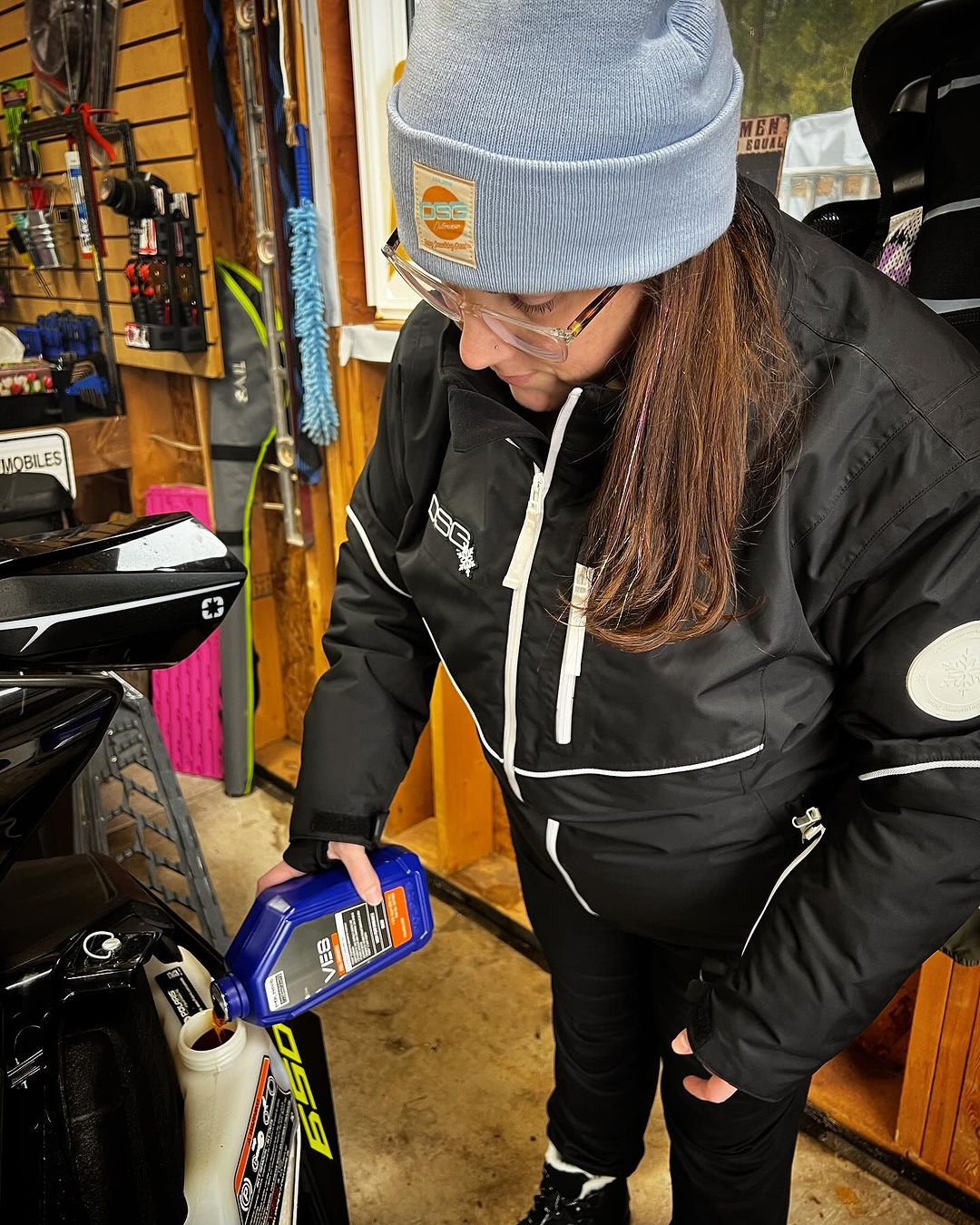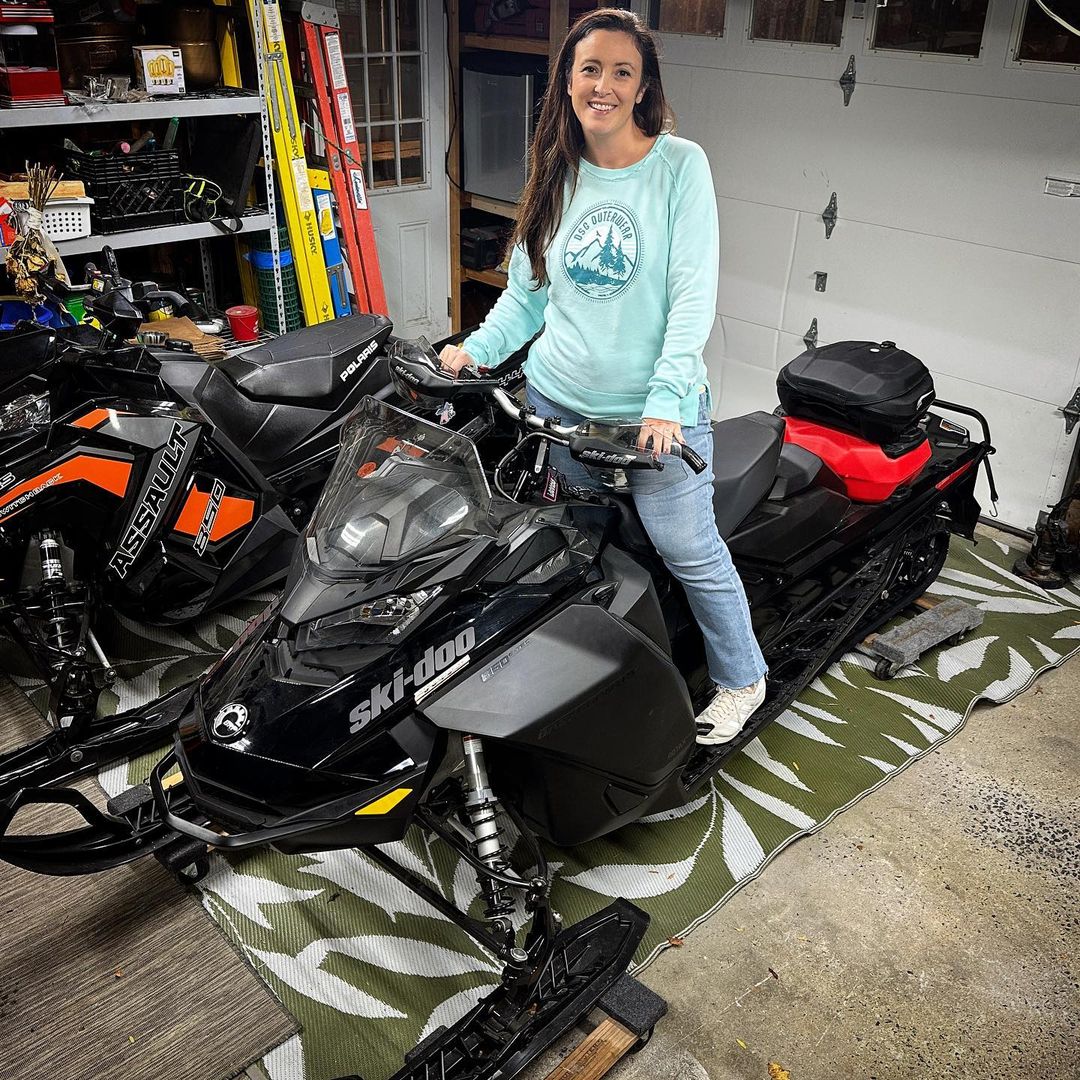"Summer-ize" Your Snowmobile
Posted by Samantha Simma on Apr 4th 2019
It’s a sad day when it’s time to put the sled away. Maybe you’re one of the lucky few who are still surrounded by mountains of snow, but the majority is seeing those snow piles quickly receding. There’s no sadder sight for a snowmobiler than seeing the sled sitting on grass in the yard instead of on snow. But, once that reality has set in, it’s time to prepare your snowmobile for a season of rest.
To leave that snowmobile on the grass as is, exposed to the elements, would be a special kind of neglect. A sitting snowmobile is susceptible to all manners of degradation. An hour or less of time this spring, invested in your machine, will ward off wear, keep your machine reliable and help retain its value. Keep reading for our snowmobile storage tips!

Wash off the winter
'Tis the season for spring cleaning and your snowmobile deserves some TLC. Self-serve car washes are great for washing up the sled, removing all the road grime that may have accumulated from winter transport or the tag-along debris that may have stowed along from your last tree-bashing session. While you're cleaning, don’t forget the underside of the sled, suspension, skis, tracks and snow flap. Use a rag to clear any dust or grease from inside the engine area. If you’re feeling ambitious, waxing your sled will keep it shining like new. Finally, spray WD-40 or another lubricant on metal surfaces. Building this barrier against corrosion will go a long way to preserving these parts.
Location, location, location
The most ideal summer storage for a snowmobile is away from moisture. Moisture is the leading cause of rust and corrosion, on any kind of machinery. Worst storage setup: under a moisture trapping tarp on the lawn in the humid summer air. If you are able, store your sled in a dry place indoors. Ideally, the snowmobile would be elevated away from sweaty concrete floors. It’s recommended that you keep the skis off the ground to avoid rusting carbides and that the rear is jacked up to remove pressure from the suspension.

Keep it covered
It’s vital that, indoors or outdoors, your snowmobile is covered with a waterproof, fitted cover. Doing so will keep out dust and moisture. If your snowmobile must be kept outside, a cover protects the snowmobile parts from the sun—which fades colors and weakens plastics. Tuck inside some moth balls or dryer sheets to deter creeping critters. Additionally, steel wool in the exhaust or intake will keep those critters from burrowing into your snowmobile for their summer hideout.
Feed the fuel
Snowmobiles aren’t really meant to be drained of fuel. Doing so makes gaskets, O-rings and fuel lines more susceptible to drying out and becoming brittle. Recommendations vary as far as keeping a quarter or half a tank of fuel in your gas tank. Either way, add stabilizer to the remaining gas for the summer months. Follow the directions on the chosen stabilizer and run the engine a few minutes to work the fuel through the system.

Fog the engine
There’s debate over whether fogging an engine for summer is necessary. The idea is to coat the inside of the engine with a thin layer of oil to protect important parts from air and moisture. Others will swear that by starting your snowmobile every few weeks throughout the summer, this keeps fuel moving and spreads oil through the engine enough to have the same affect. Newer sleds have a fog or summer “mode” that will achieve this result. Otherwise, fogging can be done manually by removing the air box and spraying fogging oil into the engine while it is running. Be sure to review and familiarize yourself with this complete process before trying it on your snowmobile.
Special considerations
All sleds are different, which means post-season maintenance and summer prep can vary greatly. Keep in mind the parts that are specific to the type of snowmobile you own. Know your sled: if it’s equipped with a battery, remove it for the summer; if you have a four-stroke, change the crankcase oil and filter. Otherwise, as oil deteriorates over time, corrosive particles build up. This is also a great opportunity to change the chain case oil.
Skip these simple steps, and you may risk the quality of that first ride next winter. Snowmobiles that are not properly prepared for summer often don’t start or result in broken parts on their first winter outing. Do yourself a favor—prevent repairs before you pay for them. And while you're at, prepare your snowmobile gear for summer storage by following our technical gear care tips.

